
Aberdeen is a city in North East Scotland, and is the third most populous Scottish city. Historically, Aberdeen was within the historic county of Aberdeenshire, but is now separate from the council area of Aberdeenshire.

Aberdeen City Council is the local authority for Aberdeen City, one of the 32 council areas of Scotland. In its modern form it was created in 1996. Aberdeen was formerly governed by a corporation from when it was made a burgh in the twelfth century until 1975. Between 1975 and 1996 the city was governed by City of Aberdeen District Council, a lower-tier authority within the Grampian region.

Local government in Scotland comprises thirty-two local authorities, commonly referred to as councils. Each council provides public services, including education, social care, waste management, libraries and planning. Councils receive the majority of their funding from the Scottish Government, but operate independently and are accountable to their local electorates. Councils raise additional income via the Council Tax, a locally variable domestic property tax, and Business rates, a non-domestic property tax.

A burgh is an autonomous municipal corporation in Scotland, usually a city, town, or toun in Scots. This type of administrative division existed from the 12th century, when King David I created the first royal burghs. Burgh status was broadly analogous to borough status, found in the rest of the United Kingdom. Following local government reorganisation in 1975, the title of "royal burgh" remains in use in many towns, but now has little more than ceremonial value.

The ancient universities of Scotland are medieval and renaissance universities that continue to exist in the present day. Together, the four universities are the oldest universities in continuous operation in the English-speaking world after the universities of Oxford and Cambridge. The majority of the ancient universities of the British Isles are located within Scotland, and have a number of distinctive features in common, being governed by a series of measures laid down in the Universities (Scotland) Acts 1858–1966. The Universities (Scotland) Act 1966 uses the term 'older universities' to refer to St Andrews, Glasgow, Aberdeen and Edinburgh. The four universities are generally regarded as the country's most selective, eminent and well-ranked universities.
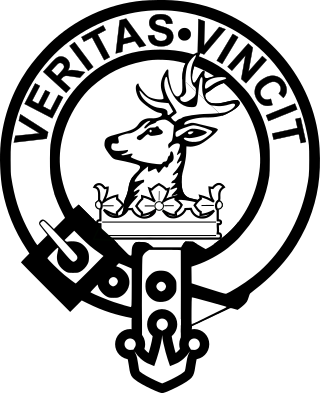
Clan Keith is a Highland and Lowland Scottish clan, whose Chief historically held the hereditary title of Marischal, then Great Marischal, then Earl Marischal of Scotland.

Marischal College is a large granite building on Broad Street in the centre of Aberdeen in north-east Scotland, and since 2011 has been the headquarters of Aberdeen City Council. The building was constructed for and is on long-term lease from the University of Aberdeen, which still uses parts of the building to store its museum collections. Today, it provides corporate office space and public access to council services, adjacent to the Town House, the city's historic seat of local government. It is the second largest granite building in the world.

Old Aberdeen is part of Aberdeen in Scotland. Old Aberdeen was originally a separate burgh, which was erected into a burgh of barony on 26 December 1489. It was incorporated into adjacent Aberdeen by Act of Parliament in 1891. It retains the status of a community council area.

Land reform in Scotland is the ongoing process by which the ownership of land, its distribution and the law which governs it is modified, reformed and modernised by property and regulatory law.
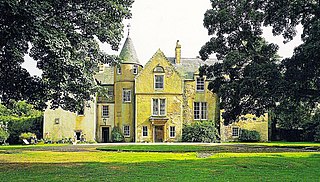
Keith Marischal is a Scottish Baronial Country house lying in the parish of Humbie, East Lothian, Scotland. The original building was an "L-shaped" Tower house, built long before 1589 when it was extended into a "U-shaped" courtyard house. The building acquired its modern appearance in the 19th century when the courtyard was filled in. The house is protected as a category B listed building.
Midstocket is an area of Aberdeen, Scotland. It is named after the Forest of Stocket, which was a gift from Robert the Bruce to the people of Aberdeen in 1319. The income from the forests land formed Aberdeen's Common Good Fund.
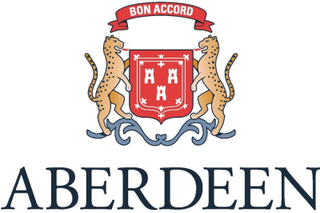
The coat of arms of Aberdeen consists of three towers within a border decorated with fleurs-de-lis. This design is known to have been used on city seals from the 15th century onwards, if not earlier.

There has been a human presence in the area of Aberdeen since the Stone Age. Aberdeen as a city, grew up as two separate burghs: Old Aberdeen, the university and cathedral settlement, at the mouth of the River Don; and New Aberdeen, a fishing and trading settlement where the Denburn entered the Dee estuary.

The Dingwall Canal was a short tidal canal running from the town of Dingwall to the Cromarty Firth in the county of Ross and Cromarty, Scotland. It was completed by 1819, to provide better access to the town, but was not a commercial success, and was abandoned in the 1880s after the arrival of the railways.

The Castle of Rattray was a medieval Scottish castle, with multiple variations on its structure over approximately six centuries. Originally built as a "late 12th- or early 13th century defensive motte" it provided protection for Starny Keppie Harbour and Rattray village. Sometime between 1214 and 1233 it was upgraded by William Comyn, jure uxoris Earl of Buchan before being destroyed in the 1308 Harrying of Buchan. After Comyn's timber castle was burned down, it was replaced by a stronger stone castle which was engulfed during a 1720 sand storm along with nearby Rattray village. After the storm, the castle was not dug out and remains covered to this day. The castle was described by W. Douglas Simpson as one of the nine castles of the Knuckle, referring to the rocky headland of north-east Aberdeenshire.

Scots property law governs the rules relating to property found in the legal jurisdiction of Scotland.
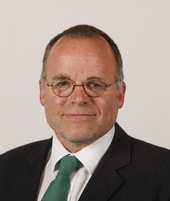
Andrew Dearg Wightman is a Scottish Independent politician, who served as a Member of the Scottish Parliament (MSP) for the Lothian region from 2016 to 2021. He was elected as a member of the Scottish Greens, but resigned from the party in 2020 and served out the rest of his term as an independent. He is also a writer and researcher best known for his work on land ownership in Scotland. He is the author of Who Owns Scotland (1996) and The Poor Had No Lawyers (2015).

The Community Empowerment (Scotland) Act 2015 is an Act of the Scottish Parliament. The act is notable for expanding the Community Right to Buy established by the Land Reform (Scotland) Act 2003 to include urban communities and for introducing new powers for Scottish Ministers to compel owners of abandoned or neglected to land to interested community bodies.
Rettie is a toponymic surname of local origin from the old lands Reattie or Raittie in the parish of Innerboyndie, Banffshire. These lands were granted to Gilbert de Dun by David II of Scotland in 1368.
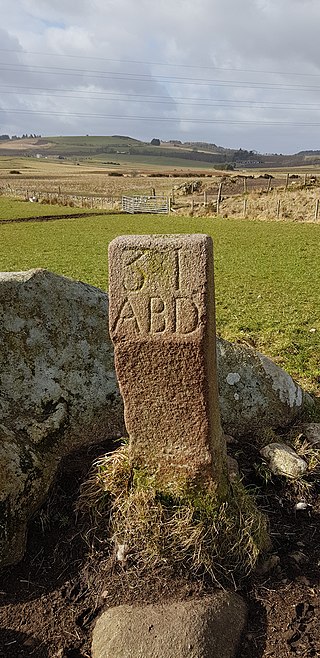
The March Stones of Aberdeen are boundary marker stones encircling the land owned by the Scottish royal burgh, dating from before 1525.
















